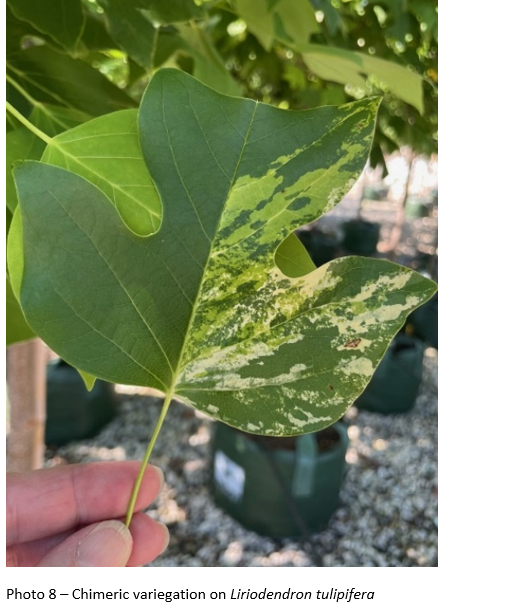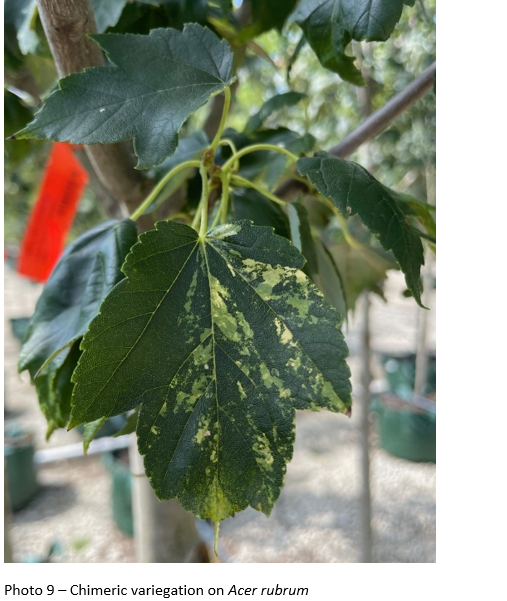This informal report by the Division of Entomology & Plant Pathology is a commentary on insects, diseases, and curiosities division staff encounter on a week-to-week basis. Comments and questions about this report are welcome and can be sent to your respective Inspector.
Our Website
Inspector Territories
Jared Spokowsky (Nursery Inspetor & Compliance Officer) -
Scale was the theme for this past week. It’s a great time to look for scale since populations should be high and at this time of year, there should be ample evidence of dieback or sooty-mold present. I found several different types of scale this week including gloomy scale, oystershell scale, and cottony maple scale.
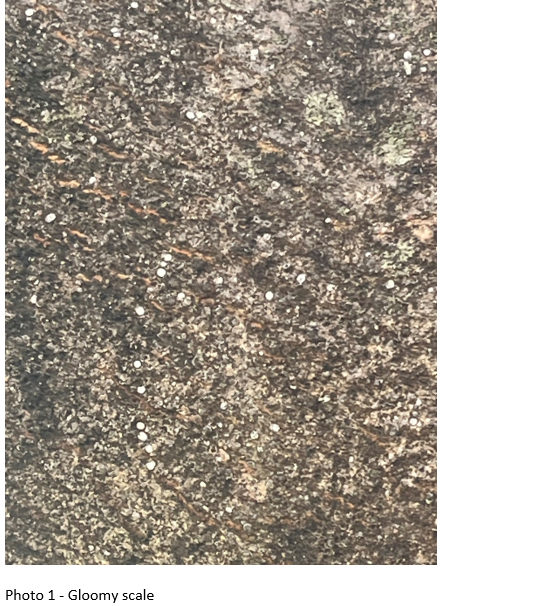
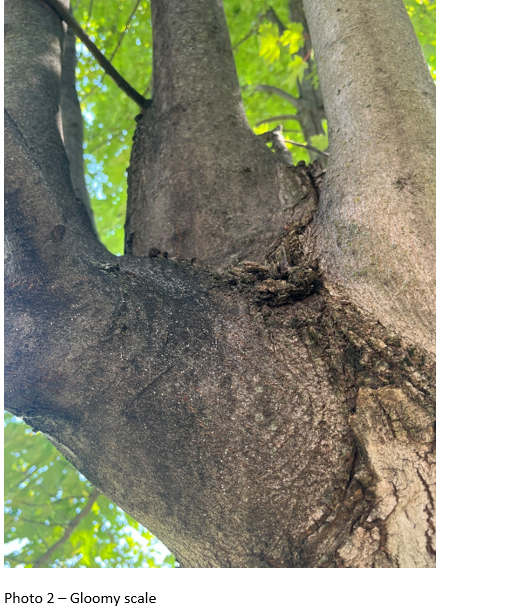
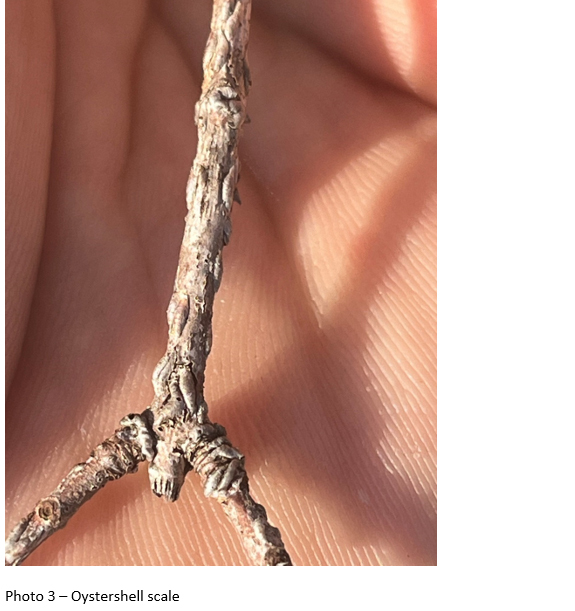
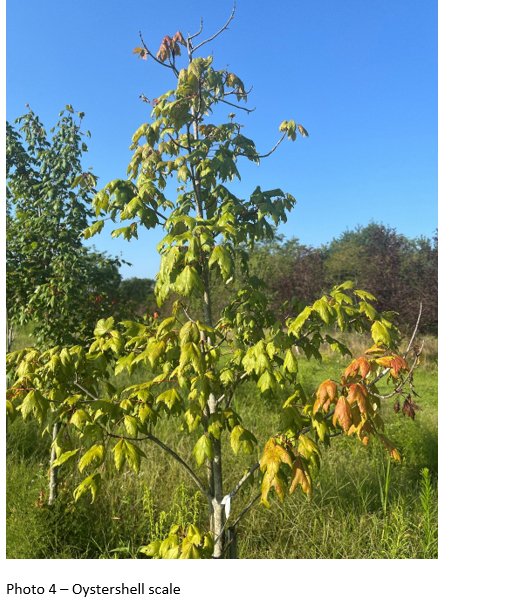

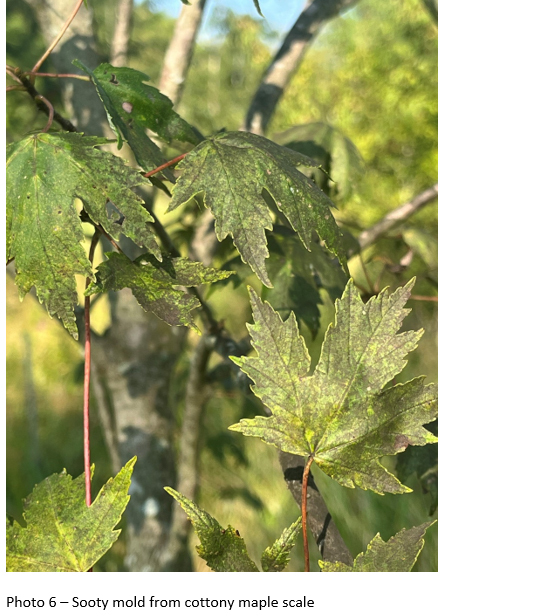
I was also at a nursery with heavy herbicide damage. Even a section of the nursery that was completely surrounded by mature woods had extensive herbicide damage. This particular nursery also does not use any herbicide, which makes me think it’s volatilization as opposed to drift. The mature oaks in the woods were also heavily distorted.
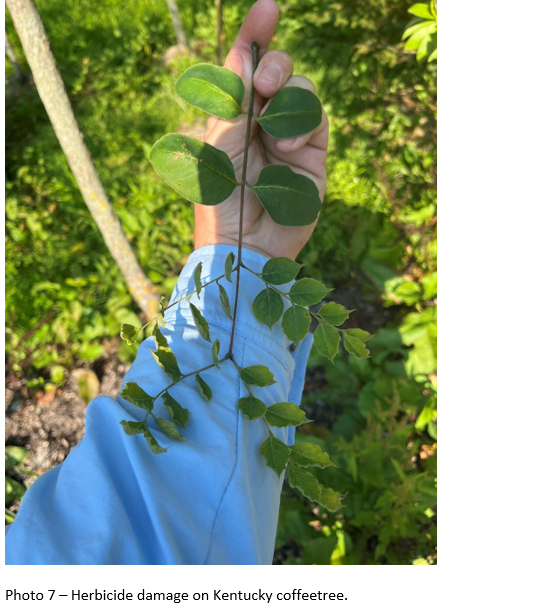
I am going to start including links to bee talks that I recommend. Some of these will be more general talks, while others will cover more specific topics. Here’s the first: Reading the Comb – Randy Oliver
Diane Turner (Nursery Inspector & Compliance Officer) –
I am a sucker for a variegated plant at any garden center; my eye is immediately drawn to the chaotic mix of green/yellow/white. The leaves below stood out to me this week while completing inspections, and I’m going to share a little info about how they are formed in nature. The appearance of leaf variegation on an individual leaf arises because of a lack or void of the green pigment chlorophyll in some of the plant cells. The cell mutation that causes the variegation can either be inherited (genetic) or occur randomly (chimeric).
Plants with genetic variegation will “come true,” and the identified color change will be stable when the plant is propagated; in other words, the color pattern will be passed from plant to plant. Chimeric variegation occurs when some of the genetic code mutates, and you find more than one genotype growing together on the same plant. Leaves displaying a chimeric mutation in nature are difficult to stabilize and will usually die out quickly due to a lack of chlorophyll without human intervention to help them survive.
For more info see this link.
